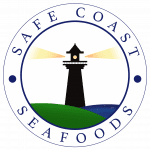Dungeness Crabs are found mainly along the west coast, from Baja California to the Aleutian Islands in Alaska, where they have been harvested commercially since the 1800’s. Mostly commercial fisheries open between Novermber and July. During the summer months, the regulations make commercial fishing less favorable to larger vessels, so fishing of Dungeness Crab in these months is dominated mostly by tribal and other smaller fishermen. Dungeness crab fishing is a large support to the fishing communities in Pacific Northwest regions.
Their breeding patterns allow Dungeness Crab to multiply in large numbers. This reason makes the Dungeness Crab a sustainable seafood option. The crustacean can weigh up to 7 pounds after molting and yields more meat per unit than any other crab owing to most of its weight being pure meat. When caught fresh, the tender white meat is uniquely fat, has a distinctive sweet flavor, and is best consumed steamed.
How Is Climate Change Affecting Dungeness Crab Population?
While the shellfish is known to be suitable for commercial fishing, climate change is posing a very real threat to conserving the population of Dungeness Crab. The biggest threat of change in the environment is the lowering of oxygen levels in coastal waters.
Recent studies have shown that, over the years, high carbon emissions will make the oceans warmer with heat-trapping of gasses. Carbon dioxide transferred from the air will alter the pH levels making the surface waters more acidic. This leads to a decline in dissolved oxygen levels in the ocean. The most vulnerable life cycle stage of the Dungeness Crab will be the sharp-clawed adults that the market demands so much of.
How Can Fisheries Protect Dungeness Crab?
The survival and population of crabs that settle in an area is dependent upon food availability, overfishing, predation, ocean currents, and water temperature.
While countering climate change might not entirely be in the hands of fishing companies, methods of sustainable fishing will certainly keep the crab population thriving for longer than expected. But natural breeding alone can’t replenish the ocean. Advocating methods that promote survival and populate the species are necessary.
To regulate fishing practices to promote sustainability local governments, companies, and communities need to collectively enforce policies that prevent overfishing and reduce bycatch significantly. A need to rebuild overfished species to protect the ecosystem is required.
Fishing communities need to band together to implement long-term resilient techniques. Some previously applied and successful methods include:
Focusing more on marketing abundant species to give the affected or declining species a fair chance to repopulate and thrive.
Strictly avoid fishing in protected areas.
-
Sort the catch to separate underweight, molting crabs, as well as egg carrying females (or berried females) and throw them back into the water, ensuring the returned crabs complete their role in the life cycle.
The seafood community as a whole needs to understand vulnerabilities and identify methods that can mitigate the harmful effects climate change can have on the population of Dungeness Crabs and other beloved seafood varieties.
The good news is that government organizations such as the California Department of Fish and Wildlife (CDFW) are implementing best practices to not only ensure ethical crab fishing techniques but aim to minimize other risks fishing practices might have on the entire ocean ecosystem. Wholesale seafood companies like Safe Coast Seafood are invested in making commercial crab season sustainable and offer the freshest catch for years to come.
